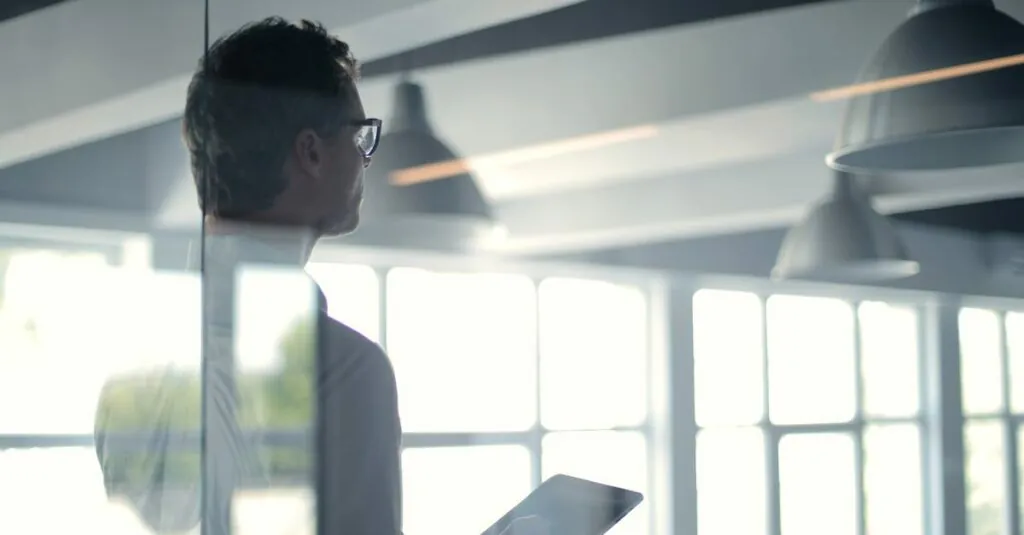In a world where spontaneity often steals the spotlight, planning and creative thinking quietly hold the keys to success. Imagine trying to bake a cake without a recipe—it might turn into a delicious disaster or a sad pancake. Planning lays the groundwork, while creative thinking adds the sprinkles that make it all pop.
Mastering the art of planning and creativity isn’t just for artists and strategists; it’s for anyone who wants to elevate their game. Whether it’s launching a project or brainstorming the next big idea, these skills can transform a vague vision into a vibrant reality. So buckle up and get ready to explore why these two powerhouses are essential for anyone looking to navigate the chaos and come out on top.
Table of Contents
ToggleImportance Of Planning In Creative Thinking
Planning plays a crucial role in enhancing creative thinking. It lays out a framework that encourages idea development and execution.
Facilitating Idea Generation
Planning fosters an environment where diverse ideas can flourish. By setting clear objectives, individuals can direct their creative energy. Structured brainstorming sessions also benefit from planning, as guidelines help keep discussions focused. Each idea generated during these sessions can then be evaluated against the defined objectives, ensuring relevance and feasibility. Breakout groups can tackle specific aspects of a project, further enhancing overall creativity by allowing various perspectives to contribute.
Structuring The Creative Process
A well-planned approach streamlines the creative process. Establishing phases, such as research, brainstorming, and prototyping, guides individuals through their projects. Each phase requires specific goals and timelines, which prevents feelings of overwhelm. Deliverables assigned at each step ensure progress while allowing for adjustments when necessary. Focused critique sessions can then occur after each stage, strengthening the quality of ideas. Ultimately, structured planning enhances creativity by ensuring that innovative thinking aligns with practical execution.
Key Elements Of Effective Planning
Effective planning relies on several key elements that enhance creativity and execution. Understanding these elements enables better decision-making.
Setting Clear Objectives
Establishing clear objectives is fundamental for guiding actions. Specific goals allow teams to focus efforts and track progress effectively. When objectives are measurable, achieving them becomes more straightforward. Defining priorities ensures that attention targets the most impactful tasks. Additionally, aligning objectives with the overall vision fosters a unified approach. Emphasizing communication among team members enhances clarity. Using tools like SMART criteria (Specific, Measurable, Achievable, Relevant, Time-bound) can streamline this process.
Resource Allocation
Allocating resources efficiently plays a crucial role in successful planning. Proper distribution of time, budget, and personnel maximizes the potential for innovative outcomes. Identifying critical resources early informs project timelines. Careful management of these resources prevents bottlenecks and setbacks during execution. Regularly reviewing resource allocation helps adjust priorities based on project needs. Prioritizing essential resources facilitates momentum and boosts team confidence. Utilizing project management tools can assist in visualizing and tracking resource distribution steadily.
Techniques To Enhance Creative Thinking
Creativity flourishes through various techniques, which help refine ideas and stimulate innovative thinking. Employing effective methods maximizes the potential for successful outcomes.
Brainstorming Methods
Brainstorming encourages the free flow of ideas, often leading to unexpected solutions. Techniques such as round-robin brainstorming involve group members presenting ideas in turns. This ensures each voice gets heard. Additionally, reverse brainstorming, which focuses on identifying potential problems, can highlight creative solutions by shifting the perspective. Brainwriting allows individuals to write down their thoughts anonymously, fostering a more open exchange. Lastly, group visualization enhances collaboration, enabling team members to collectively imagine concepts, further driving creativity forward.
Mind Mapping Approaches
Mind mapping serves as a visual tool to enhance creative thinking. Creating a central idea encourages individuals to branch out with related thoughts. Color coding and images make maps engaging and easier to navigate. Digital tools like MindMeister or Xmind allow for easy modifications and sharing among teams. Using this approach nurtures connections between ideas, making it easier to uncover innovative solutions. Further, incorporating keywords enhances focus, ensuring that thoughts remain structured yet adaptable for further development.
Challenges In Planning And Creativity
Planning and creativity often face hurdles that can hinder effective execution. Identifying and addressing these challenges is crucial for success.
Overcoming Mental Blocks
Mental blocks can stifle creativity and impede planning. Many individuals experience creative stagnation when faced with overwhelming tasks or unrealistic expectations. Exploring different techniques, such as taking breaks or changing environments, can help stimulate fresh ideas. Engaging in brainstorming sessions with diverse perspectives can also encourage innovative solutions. Utilizing tools like mind mapping promotes clarity and visual organization, making it easier to navigate complex ideas. By recognizing mental blocks early, individuals can implement strategies to overcome them, ensuring that creativity flows freely.
Balancing Structure With Flexibility
Maintaining a balance between structure and flexibility enhances both planning and creativity. Rigid structures may restrict creative thought, limiting innovation. Incorporating adaptable frameworks allows for modifications when unexpected challenges arise. Setting clear goals offers direction while enabling room for exploration. Teams can encourage open dialogue to foster a creative atmosphere, where everyone’s input is valued. Regular check-ins help assess progress and make necessary adjustments. By harmonizing structured planning with the freedom to innovate, individuals can effectively navigate obstacles and produce dynamic results.
Mastering planning and creative thinking is vital for anyone aiming to translate ideas into reality. These skills not only provide a structured approach to innovation but also create an environment where creativity can thrive. By setting clear objectives and fostering collaboration, individuals and teams can navigate challenges effectively.
Embracing techniques that enhance both planning and creativity empowers people to overcome obstacles and achieve their goals. The balance between structure and flexibility is essential to unlock potential and drive success. Ultimately, integrating these powerful tools into everyday practices can lead to remarkable outcomes and a more fulfilling creative journey.






